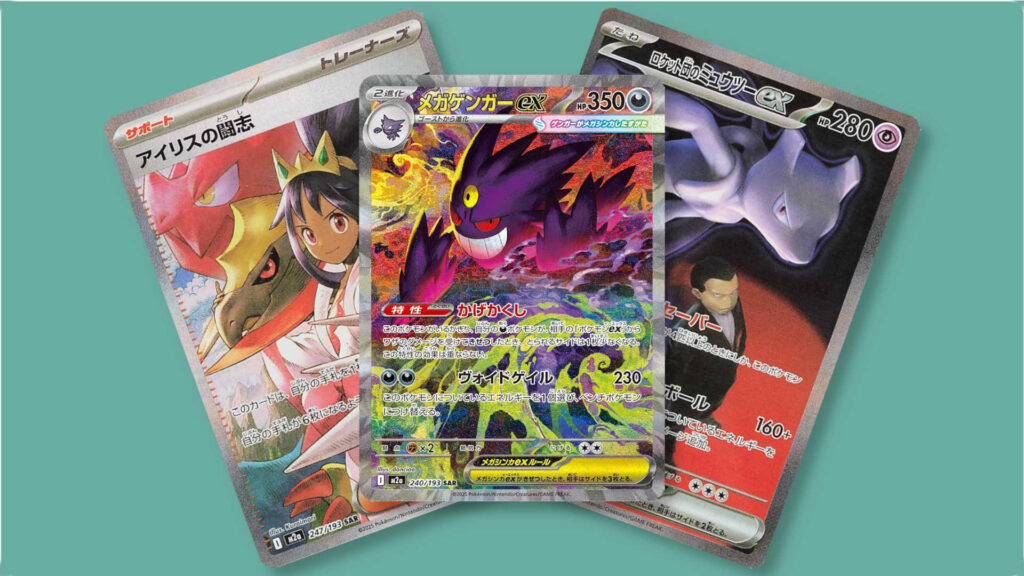Image courtesy of Wizards of the Coast
If there’s one thing my deck breakdowns have been missing lately, it’s Dragons. Seriously, we’re so close to the end of Tarkir: Dragonstorm Standard and I haven’t talked about a deck with a single Dragon! Today’s deck combines a traditional control game plan with a Dragon-y top end, so let’s take a close look at Jeskai Control!
Table of Contents
ToggleWhat’s the Game Plan for Jeskai Control?
Jeskai Control wants to slow the game down until it can play it’s powerful finishers. We have a mix of counterspells, removal, and sweepers to keep our opponents from getting out of hand. We also have powerful card advantage engines that find us the right cards at the right time. Once we’ve established control of the game, it’s only a matter of time until our Dragons and other threats close out the game!
The Spells
First up, our countermagic. Dispelling Exhale is definitely one of the stronger Quench variants we’ve ever seen, often upgrading itself to a strictly better Mana Leak! While we pack a lot of ways to remove resolved threats, there’s some things we can’t let hit the board (and even more we’d rather just not bother with.) Dispelling Exhale stays useful for a surprisingly long time, too. Many decks struggle to resolve their important cards when they need an additional four mana!
Three Steps Ahead is a card I’ve praised before. It’s fantastic as a no-nonsense counterspell, but few cards are as flexible as this. I’m happy to use this to dig further into the deck and potentially throw a card into the graveyard for use with Shiko, Paragon of the Way later. Our creatures are also great to copy, as they all have powerful triggers when entering the battlefield. Of course, with enough mana we can mix and match these modes as we please!
Next up, targeted removal. Lightning Helix has been a fantastic card for nearly 20 years, providing removal and stabilization in one efficient package! The life gain is extremely important to keep us out of range of Heartfire Hero and friends. In slower matchups, being able to hit your opponent directly comes up more often than you’d think.
Get Lost often feels like a necessary evil in Standard white decks. It’s arguably the most flexible removal spell in the format, but the Map tokens our opponent gets can come back to bite us. As long as we’re careful about what we target and when, Get Lost more than pulls its weight. We also have a single Abrade, which sort of bridges the gap between our other two removal spells. It’s notably our only targeted removal that hits artifacts, which is definitely useful, but more often than not you’re going to hit a creature instead.
Temporary Lockdown and Split Up are both three mana sweepers to answer multiple threats at once. Both are vital to stop the onslaught from Izzet Prowess and other aggro decks. Temporary Lockdown notably hits nonland permanents like Cori-Steel Cutter, Up the Beanstalk, and all of the enchantments Esper Pixie wants to bounce repeatedly (which can be a blessing or a curse if they then destroy or bounce your Lockdown.) Split Up is less consistent, but often clears the board just as well against aggressive decks and can really make a difference on a board with more expensive creatures. Knowing when to deploy your sweepers and when to hold back is absolutely vital to piloting this deck.
Stock Up is one of the best ways to refill your hand in Standard. It’s been called a three mana Dig Through Time for good reason. This spell digs deep into your deck and usually lets you grab whatever you need for any given situation. It’s so good, we really wish we could have a fifth copy! That’s sort of where Rediscover the Way comes in. It’s slower and more mana-intensive than Stock Up, but you do get to see six cards and grab two of them over the course of two turns. The final chapter ability hasn’t come up a ton in my experience, but it is upside.
Rounding out our spells is a single copy of Jeskai Revelation. Seven mana is a lot, but this deck is great at consistently hitting land drops and can easily get the card into the graveyard when casting it isn’t realistic. When we can cast it, this spell does everything! It’s hard to be in a losing position when you resolve this spell, so it kind of acts as one of our finishers.
The Creatures
We only have a handful of creatures here, but they’re all very impactful. First up, Beza, the Bounding Spring does a fantastic job of leveling the playing field when you fall behind. This usually means gaining life and creating Fish tokens against aggressive decks, which makes their job of swinging for lethal a lot harder. Getting the card draw and Treasure token are rarer, but helpful in slower matchups.
Finally, let’s take a look at our Dragons! Shiko, Paragon of the Way has been seriously impressive. The 4/5 flying vigilance body presents a fast clock, but the ability to recast a spell from the graveyard for free really pushes it over the edge. Nearly all of our spells can be recast this way, making Shiko and easy two for one or better! We also have Marang River Regent, a real nightmare for anyone who’s drafted a lot of Tarkir: Dragonstorm. The Coil and Catch side can help us dig for more cards when needed, but the 6/7 flyer that bounces two creatures is really where it’s at.
The Lands
Our mana base is primarily built from surveil lands and verges. While the mana can be a little slow at times, it’s remarkably consistent as every surveil land enables the verges to tap for both colors of mana. Getting so many surveil triggers also helps us filter for the cards we want. As long as we sequence our lands correctly this usually ends up working out just fine. We don’t really play one drops anyway, and can get away with taking turn two off as well in many matchups.
I do want to point out Cori Mountain Monastery as our utility land here. It enters untapped if we have any surveil land in play and later in the game the activated ability can really come in handy. I’ve been bailed out of some tough spots with the additional card advantage it provides, so keep it in mind!
The Sideboard
Authority of the Consuls – This card shuts down aggressive decks and Esper Pixie frighteningly well. It’s especially important when you’re on the draw, as you’ll have less opportunities to answer their threats otherwise.
Pyroclasm – Another sweeper for aggressive decks, particularly red aggro decks and Convoke.
Kutzil’s Flanker – This is mainly here for additional graveyard hate, though I do also like it in aggressive matchups for the life gain.
Ghost Vacuum – You know what Ghost Vacuum is for by now, right? Do note that while I often say white decks can play Rest in Peace instead of or in addition to Ghost Vacuum, you really don’t want to mess with your own graveyard due to Shiko, Paragon of the Way.
Negate – This mainly comes in for opposing control decks and combo/reanimator like Omniscience Combo. Just be wary if your opponent is leaning heavily on Mistrise Village.
Loran of the Third Path – I like Loran best against Simulacrum Synthesizer decks, though she can often snipe an artifact or enchantment in a variety of midrange/control matchups. Being able to prevent Pixie from bouncing an enchantment or Zur Domain from getting an Overlord online is worth considering as well.
Tishana’s Tidebinder – Honestly you can bring in Tidebinder in most matchups. The more you play, the more targets you’ll see this thing has. It stops Cori-Steel Cutter, Overlords, Abhorrent Oculus, and even a variety of creatures that you see in post-sideboard games.
Jace, the Perfected Mind – This is key for the control matchup. Actually pressuring our opponents in the mirror or against something like Zur Domain is very difficult. Just mill them instead!
Wilt-Leaf Liege – If your opponent is running Hopeless Nightmare, you want this card. That mainly means against Esper/Orzhov Pixie, but every once in a while you’ll run into something offbeat like Monoblack Discard or Rakdos Sacrifice where this does work. Wilt-Leaf Liege is castable in a pinch, though triple white is not at all easy.
Tips and Tricks for Jeskai Control in Standard
- Sideboarding with this deck isn’t generally too hard, as most of the sideboard itself has obvious applications (save for Tishana’s Tidebinder, which requires a little more practice and knowledge to optimize.) Concentrate of the cards you need to cut. This usually means cutting sweepers and Beza, the Bounding Spring in the slower matchups, and cutting slower cards like Jeskai Revelation and some amount of countermagic in the faster ones (especially on the draw.)
- Three Steps Ahead making a token copy of Shiko, Paragon of the Way at instant speed is kind of absurd. In particular, you can do this to cast a copy of a sweeper at instant speed, which is obviously very powerful. You can get blown out if Shiko is removed in response, but this can be a game-winning play.
- I’ve been surprised by how often I aim Lightning Helix and Jeskai Revelation directly at my opponent. Shiko copying Lightning Helix a few times can end up burning out your opponent fast, especially if you can get in a hit or two with a flyer. This shouldn’t be the default use case for Lightning Helix, but keep it in mind when you want to finish up a game.
- Solid control fundamentals will do you a lot of good with this deck. Do you need to counter or remove that threat, or can you take a hit and then get it with a sweeper? Can you afford to tap out for Stock Up, or do you need to keep your interaction up? These are the kind of questions you can only answer with experience, so get your reps in!
Thanks as always for reading!




